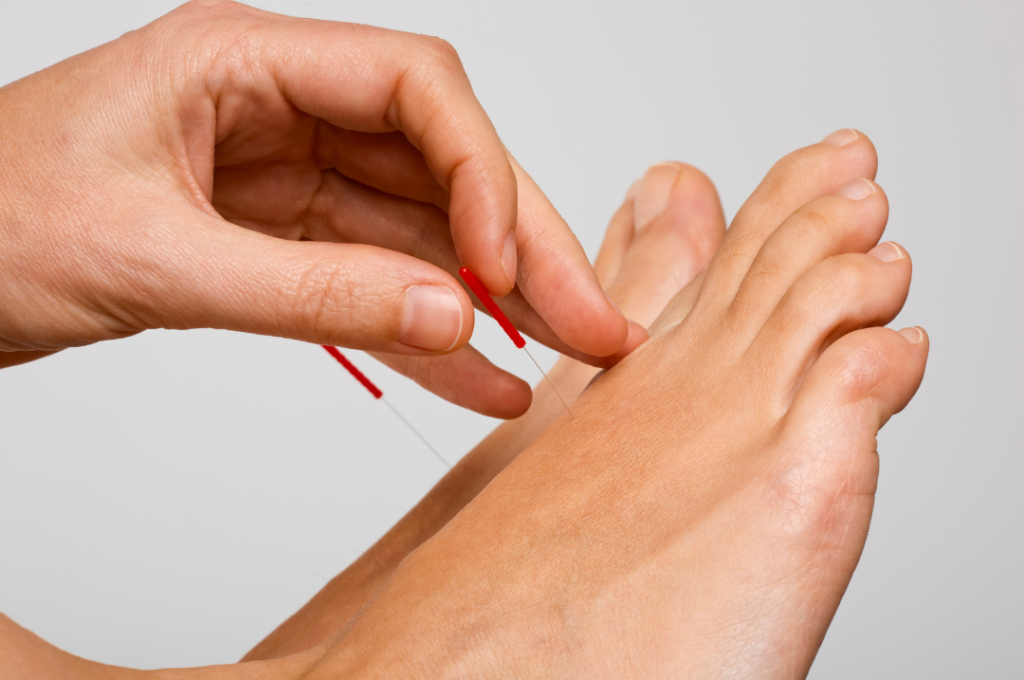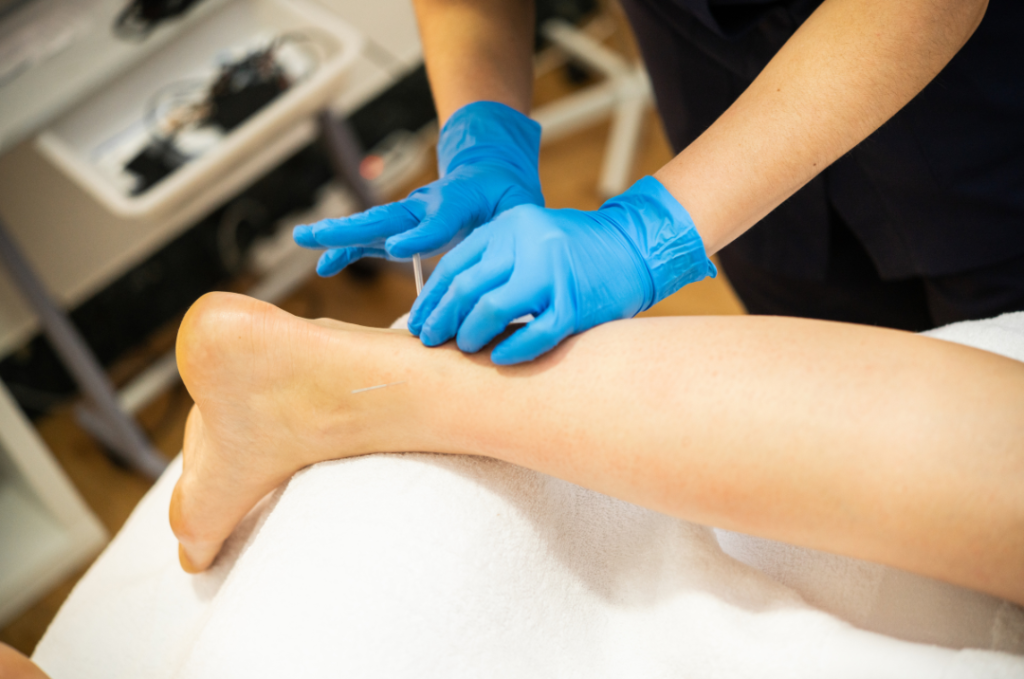Dry Needling
Our podiatrists use dry needling to work on trigger points in your muscles to release the ‘knots’ that are responsible for pain and contribute to the development of foot and leg injuries for many of our patients.
What Is Dry Needling?
 Dry needling is an adjunct service we perform within an appointment (for example, alongside shockwave or foot mobilisation) to help optimise and accelerate your recovery from a range of foot pains and problems. We use it when we identify tight muscle bands, often referred to as “knots” in the feet or legs, that may be keeping the muscle contracted, stiff and limiting the movement and flexibility of the muscle and surrounding joints. In some cases, these knots have been present for a long time and may be one of the reasons that your injury developed in the first place because of changes in the way your feet are functioning as a result of the muscle tightness.
Dry needling is an adjunct service we perform within an appointment (for example, alongside shockwave or foot mobilisation) to help optimise and accelerate your recovery from a range of foot pains and problems. We use it when we identify tight muscle bands, often referred to as “knots” in the feet or legs, that may be keeping the muscle contracted, stiff and limiting the movement and flexibility of the muscle and surrounding joints. In some cases, these knots have been present for a long time and may be one of the reasons that your injury developed in the first place because of changes in the way your feet are functioning as a result of the muscle tightness.
Dry needling uses very thin needles, very similar to the ones used for acupuncture, to get into the trigger points (knots) in the muscles and release the tension. By releasing the trigger points, movement can be restored and pain can be reduced. Dry needling is a fast, simple and effective procedure, and we find it is a fantastic support for our patients’ recovery and rehabilitation.
What Happens During Dry Needling?
Your podiatrist will first start by feeling along specific muscles (related to your pain or injury) to see if any trigger points are present. You will be able to feel these too – you’ll notice a significant pain when a trigger point is pressed upon. This is what we want to relieve and to restore healthy movement to the area, so your podiatrist will mark all of the trigger points to know where the needles should go.
 Your podiatrist will then get the needles (every single needle is held safely within a plastic tube). The tube is applied over the marked point, and tapped into the skin. As the needles are so thin, some people feel this while others do not. The needle is guided gently deeper to reach the trigger point, at which point the muscle may twitch. Slight readjustments may need to be made to reach the perfect spot. The needle is then withdrawn, and we start work on the next trigger point. After all the needling is completed, we may use some quick and gentle massage on the muscles.
Your podiatrist will then get the needles (every single needle is held safely within a plastic tube). The tube is applied over the marked point, and tapped into the skin. As the needles are so thin, some people feel this while others do not. The needle is guided gently deeper to reach the trigger point, at which point the muscle may twitch. Slight readjustments may need to be made to reach the perfect spot. The needle is then withdrawn, and we start work on the next trigger point. After all the needling is completed, we may use some quick and gentle massage on the muscles.
Our needling sessions are done alongside other treatments to maximise the results, as opposed to a standalone treatment. Therefore, your needling may continue (with your consent, of course) throughout your course of treatment with us, if your podiatrist identifies trigger points. If you have no prominent trigger points, or are not experiencing any pain or stiffness, dry needling will not be needed.
Is Dry Needling Painful?
Although the term sounds painful, the needles we use are incredibly thin, so most people barely feel them entering the skin. You may notice certain sensations as we are reaching the trigger point, particularly as in many cases the muscle will twitch when releasing the knot. Removing the needles is also quick and typically painless, and most needles do not leave a mark or cause any bleeding.
FAQs
Why do knots appear in muscles?
Trigger points can develop when muscles are damaged, where they are overused past the point that they can safely handle or from trauma. This can occur both during physical activity and at work, particularly if the nature of your work is repetitive and laboursome. Once the trigger points are there, they can prevent the muscle from fully lengthening and working properly, and can contribute to muscle weakness.
Is dry needling safe?
Yes, dry needling is safe for everyone, including in pregnancy. All needles are single use and are disposed of immediately after use. Side effects are very uncommon, with the most noted one being some minor bleeding from the needle site or the occasional bruising at the needle site.
What’s the difference between dry needling and acupuncture?
Acupuncture focuses on restoring the flow of energy and balance within the body. This is very different to dry needling, which stimulates a specific, painful and palpable trigger point within your muscle.


